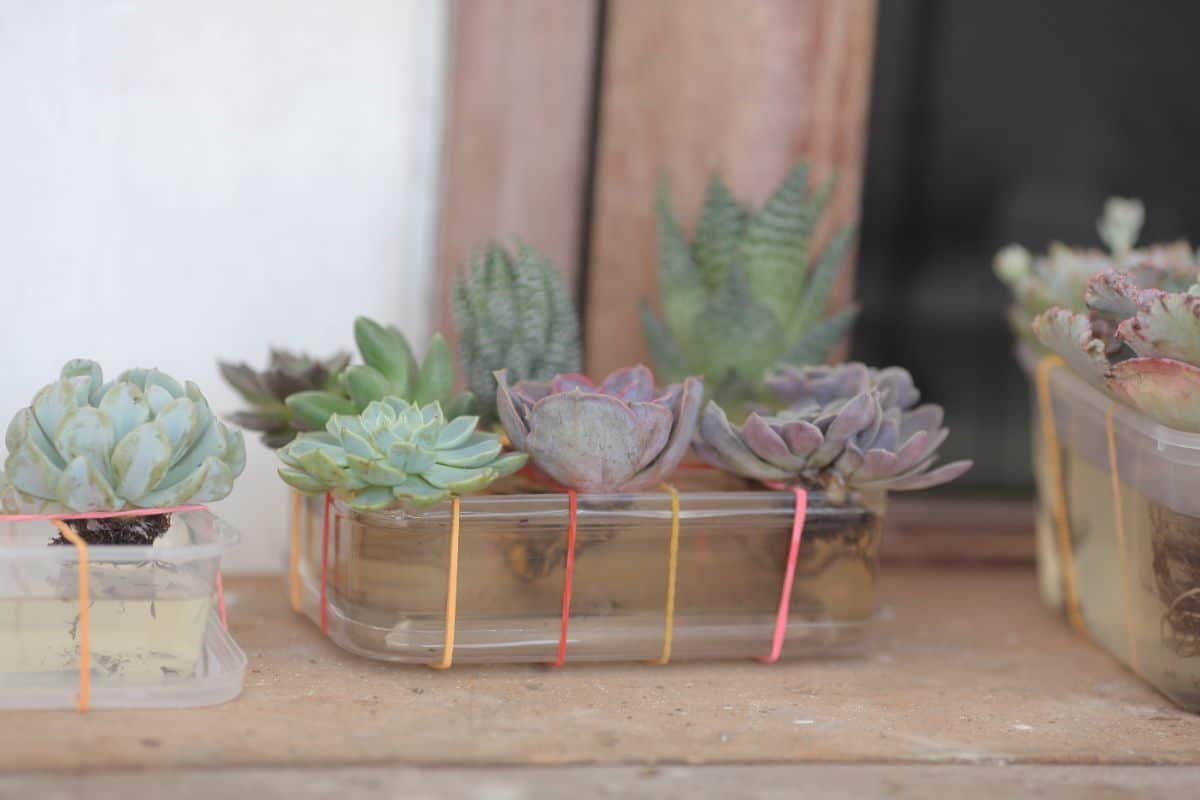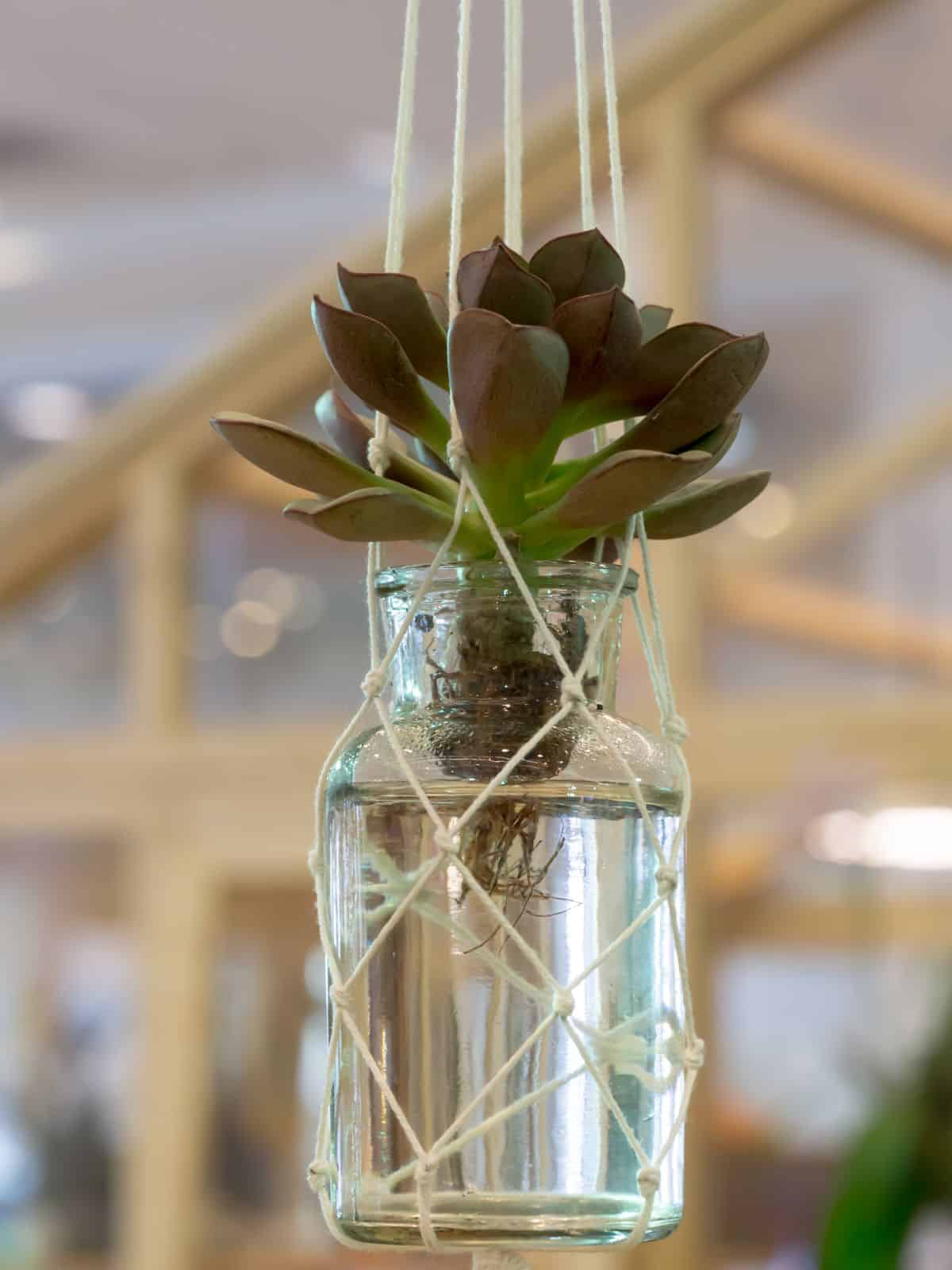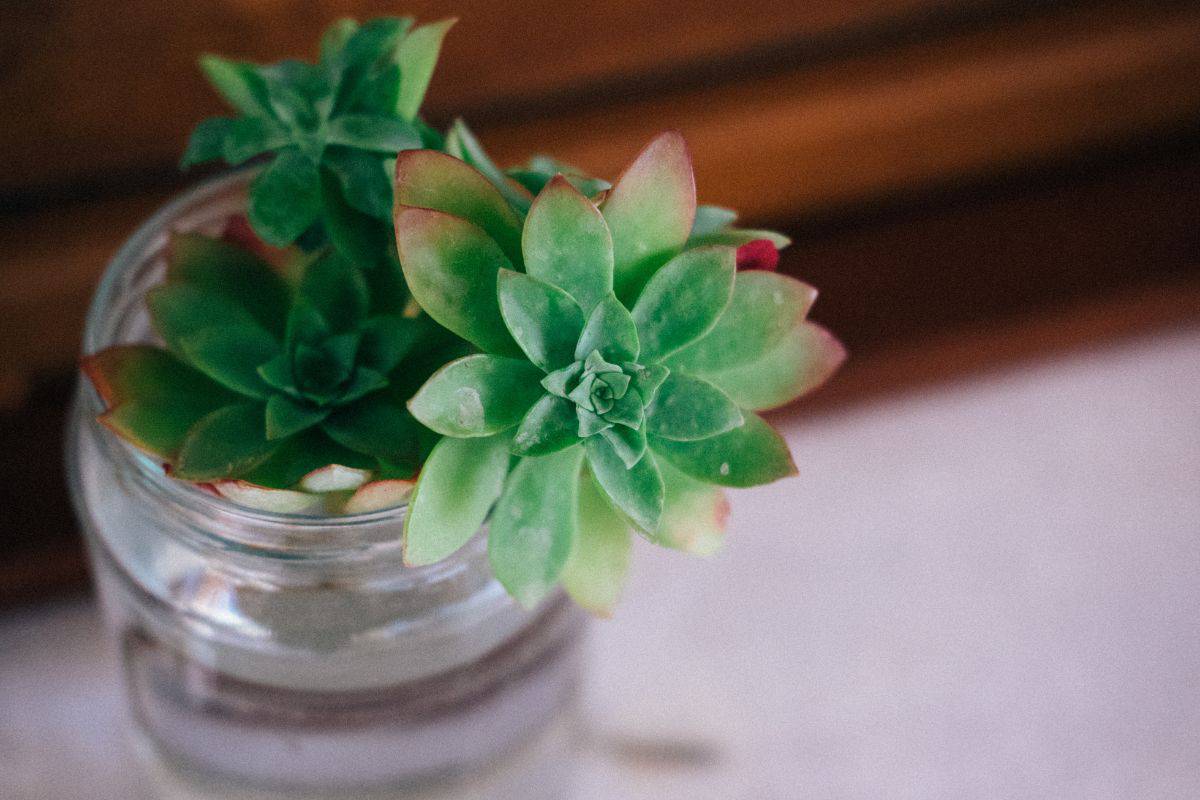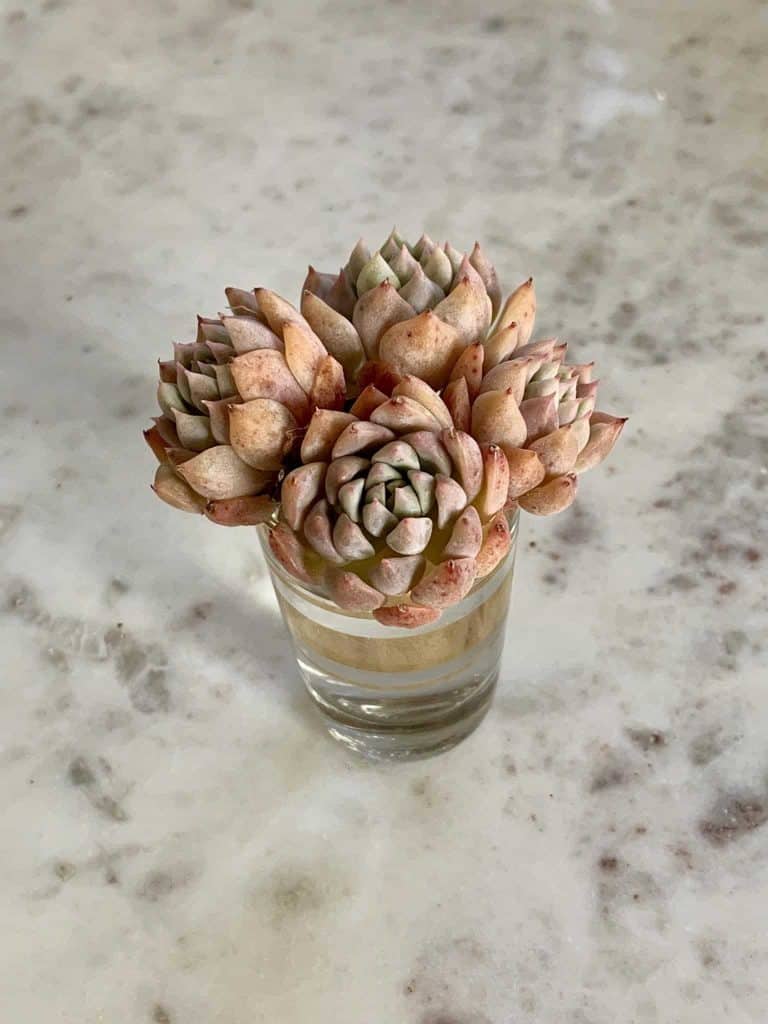As a succulent enthusiast, you’ve probably had plants go through stressful situations and end up looking a little unwell. Maybe they were shipped in a dark box over long distances or they were underwatered or even sun damaged. Succulents are drought tolerant plants, but eventually a lack of water can absolutely affect their health.

Typically, with the right care, many succulents can bounce back from situations like these, but wouldn’t it be great if there was something you could do to help them recover more quickly? Rather than use normal succulent watering methods to revive your dehydrated plant, you may want to consider water therapy.
Jump to:
What is Water Therapy?
Water therapy is a somewhat controversial method of helping succulents recover from stress or damage primarily from severe dehydration. The process involves removing all traces of dirt from the plant’s roots and submerging the roots in water for a certain period of time, usually between 24 and 72 hours. If done correctly, the plant is supposed to be perky, plump, and revitalized after its water therapy session.
Water therapy is a cause of debate among succulent lovers. Since succulents don’t typically do well with too much moisture, many gardeners are hesitant to try this controversial treatment. Supporters claim that the process can help succulents recover from stress more quickly, while opponents believe that it’s putting plants at risk of root rot.
Regardless of opinion, succulent fans can all agree that water therapy is not appropriate for every plant or every situation.
https://www.instagram.com/p/BsPgOK4nwP7/?utm_source=ig_web_button_share_sheet
While it's an excellent picture (and a good example of water therapy), I definitely wouldn't recommend dunking succulents in water as a temporary storage method. They would be just fine bare-root and out of direct sunlight.
Read Related Topics:
When Should You Use Water Therapy on Succulents?
Succulents that have gone long periods without sun, have received too much sun, or have been extremely underwatered may be good candidates for water therapy. Plants that have gone through periods of heavy stress will benefit more from water therapy than healthy plants.

It’s important to note that if a succulent has been damaged by sun, water therapy will help to rehydrate the plant, but it won’t repair any burned spots on the leaves. Unfortunately, little can be done about burned spots. They are not harmful to the plant long-term, but they can be a bit of an eyesore. If you find them particularly unsightly, you can always remove the damaged leaves.
No products found.
Water therapy should be used sparingly, as regular sessions can damage the plant’s roots. Since you need to remove the dirt from the roots prior to water therapy and then replant the succulent afterwards, you can potentially damage the roots with too much handling. There is also the possibility of root rot if the roots are not allowed to dry out some afterwards.
Water therapy is best used in emergencies only. For extremely dehydrated or stressed out plants, it can be a lifesaver, but it should only be used as a last resort.
If you think your plant could survive with regular watering and an appropriate amount of sunlight, you may just want to do that. It may take longer for you plant to recover, but it’s safer than water therapy, especially if you’ve never performed this type of therapy before.
How to Perform Water Therapy on Succulents
Preparing the Succulents for Water Therapy

In order for water therapy to work efficiently with a lower chance of root rot, the roots must be cleaned of all soil or organic material before submerging them in water. If you’ve received a shipment of bare root plants, you can submerge them immediately, but if your plants have been in soil, you’ll need to gently knock off excess soil. You can also gently rinse the roots under running water to thoroughly clean them of soil.
Read Related Article: How to Graft Cacti
Choosing the Water for Water Therapy
The type of water you use will depend on your own preferences. Many gardeners simply use tap water for their water therapy sessions. Tap water is a perfectly fine option, especially if it’s what you normally water your succulents with. Some gardeners use only rainwater, as they believe that rainwater is more nutritious and doesn’t contain the excess salt and minerals of tap water.
If you're very, very serious, you could include a water bubbler or aerator in the vessel. These devices, commonly used in fish tanks, ensure the water is oxygenated. It allows the plant to continue breathing and almost guarantees there won't be root rot issues.
You can use something like this bubbler, which is similar to how hydroponics facilities grow plants submerged in water!
Dunk the Succ

Whichever type of water you choose, make sure your container is large enough to completely submerge the roots of your plants without cramping or crowding them. A small jar or glass is usually sufficient, unless your succulent is particularly large.
Once you’ve prepared your container of water, you’ll want to submerge the roots of your succulent. Try to submerge only the roots and keep the stem out of the water. You may need to prop your plant up with some sort of support system, such as popsicle sticks or plastic wrap, to keep the stem out of the water.
How Long Water Therapy Lasts
The length of time you leave your plants in water will depend on how dehydrated they are. If they’ve gone a significant amount of time without water, you may want to leave them submerged for a longer period of time.
Most gardeners leave their plants in water for somewhere between 24 and 72 hours. Some even leave their succulents submerged for up to a week. Once your plant has returned to its normal plump and perky appearance, you can remove it from the container of water.
After your plant’s water therapy session, experts recommend letting the roots dry out a bit before replanting. Wet roots can be fragile, and you may accidentally damage them during the repotting process. It’s also important to wait several days after repotting before watering your succulent. Watering a plant too soon after water therapy can result in root rot.
Does Water Therapy for Succulents Work?
Water therapy can be a good treatment for particularly dehydrated succulents but keeping your plant in soil and watering it well is probably a safer option. Remember that water therapy puts your plants at risk of developing root rot, especially if done inappropriately. You’ll need to use your best judgement to determine whether or not water therapy is right for you and your plants.
While water therapy may not be for everyone, it’s still an useful tool to have in your succulent care toolbox, especially in emergency situations. Just remember to handle the roots with care. If you choose to try this controversial treatment out the next time you have a stressed, dehydrated plant, just remember to keep a close eye on your precious succulent!

